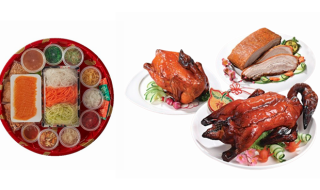
When pushing your brand into new markets, you must understand how to protect it. Otherwise, you run the risk of being copied and swindled by possibly larger companies.
But how do you do that in the South-East Asia and Singapore markets? See below!
#1 Understand Your Local IP
This might be the most important tip of the lot. Spending time to ensure you and any brand partners have been informed on IP regulations in your destination country will ensure you take advantage of business opportunities and avoid falling into local law and regulation traps.
When you handle any IP legislation correctly, you can gain increased commercialization, take part in money-making opportunities, and generate substantially more income than your current figure.
#2 Make Sure You Aren’t Assuming European Law Protects You In South-East Asia
To protect your brand in Singapore and South-East Asia, you will need to register your trade mark. Having said that, Singapore does have a law that protects unregistered trademarks by following regulations relating to fair competition and misrepresenting a brand. Although, be prepared for officials to not put this rule into practice.
You are far safer to properly register your trademark in Singapore and the South-East Asia market. There are a few steps involved in the process, all of which we’ll discuss below:
Step One: The Pre-Filing Search
For those planning to enter the market before the registration is accepted, you’ll need to perform a Singapore trademark availability search first. If an existing trademark is identical or very similar to yours, you won’t be able to move further with the process.
As soon as you determine that your trademark is bespoke, you can move on.
Step Two: The Application
The form needs to be filed with the local trademark office. You’ll also need a local Singaporean trademark attorney if you don’t have an address in Singapore or South-East Asia. You will need to pay application and registration fees at this point.
Step Three: The Examination
At this stage, someone will check to see whether you meet the minimum requirements. If you run into any hiccups it could take up to 18 months. However, it usually won’t be longer than 90 days.
Step Four: The Publication
If successful, your trademark will be published in the Singapore trademark journal.
Step Five: The Registration
After that, your trademark will be given registration. This means you’ll be protected for 10 years!
#3 Be Ready to Enforce Your Rights
To tell you the truth, entering the Singapore and South-East Asian market comes with struggles. During the rough patches, you have to be prepared to defend and enforce your rights. This ensures that your business objectives are met instead of unduly quashed.
If you fail to defend your intellectual property rights, you risk allowing your brand to be diluted in the future. What does this mean we hear you ask? Well, brand dilution generally occurs when the business’s equity reduces due to an unsuccessful company extension.
#4 Inherit a Franchising Strategy
South-East Asia, especially Singapore, favors the franchise business structure as it’s the most widely used one in the area. Because of this, ensuring your brand is protected in this region means developing a franchise strategy that works.
Your franchise model should include a training program duration for all franchise applicants. Alongside this, you will need to write up an operation and setup guidebook for all of the candidates to follow. This ensures consistency regardless of how widespread your brand becomes.
Additionally, make sure that your franchise agreements include a statement that clearly determines the use of your brand’s intellectual property. Generally speaking, this pertains to trademarks, copyrights, trade secrets, and other eligible factors.
Take great care when you are writing them to make sure the franchise guidebook and contracts cover all possible uses of the franchise. As you know, quality control is incredibly important for brands in general — and even more so for franchises!
#5 Get to Know Your Company’s IP Needs
Before you enter the Singapore and Southern-East Asian market, you should make sure you understand the parts of your company that are classified as intellectual property. Then, you can identify them properly prior to joining unchartered territories. Consulting an intellectual property advisor or lawyer is therefore recommended.
Don’t forget that intellectual property doesn’t simply cover tech-based inventions and products. Instead, it extends to things like a cafe’s branding, the uniform colors, and how they choose to dress their windows. Everything that makes your brand yours is classed as intellectual property because this is how people differentiate between companies.



